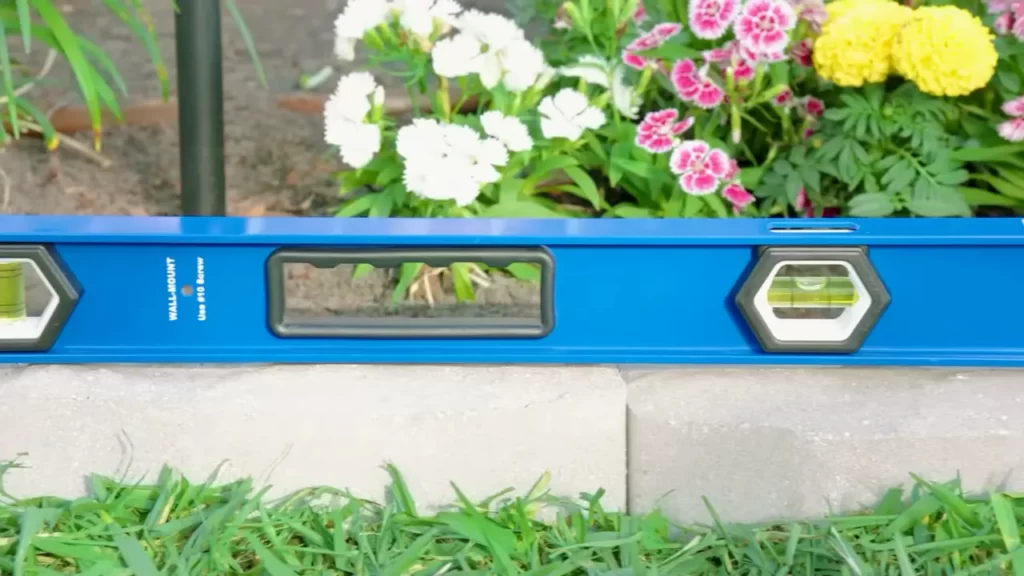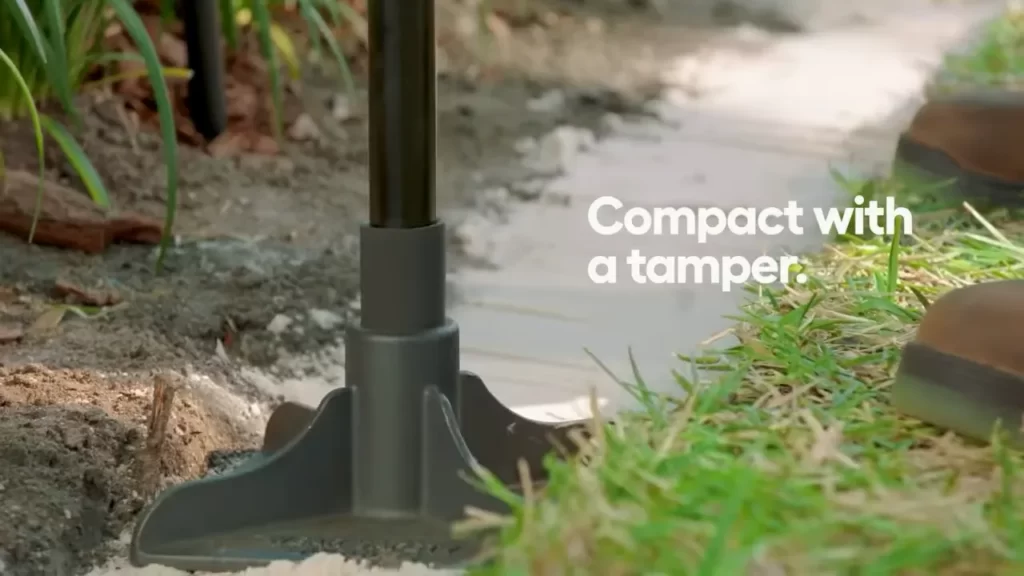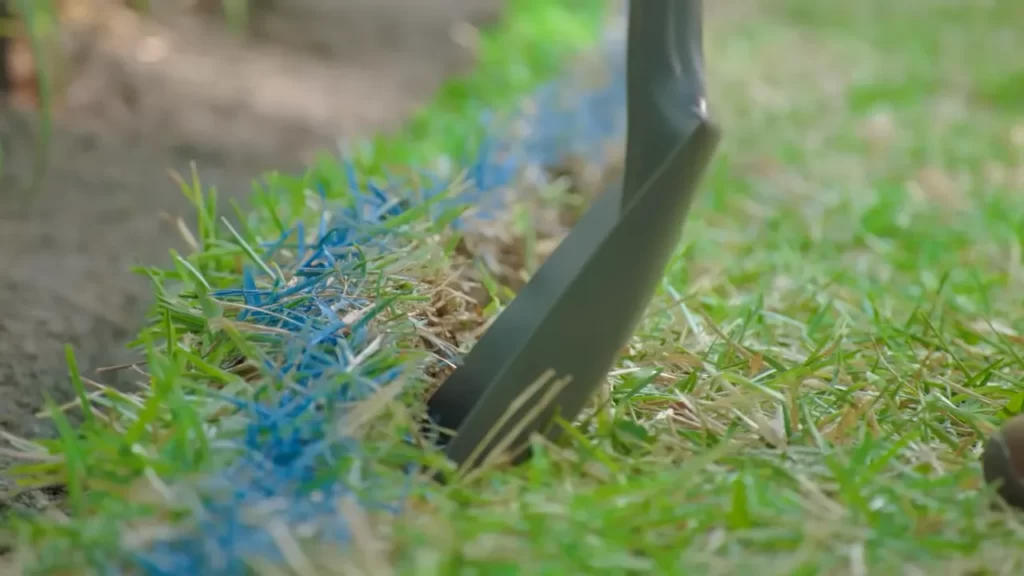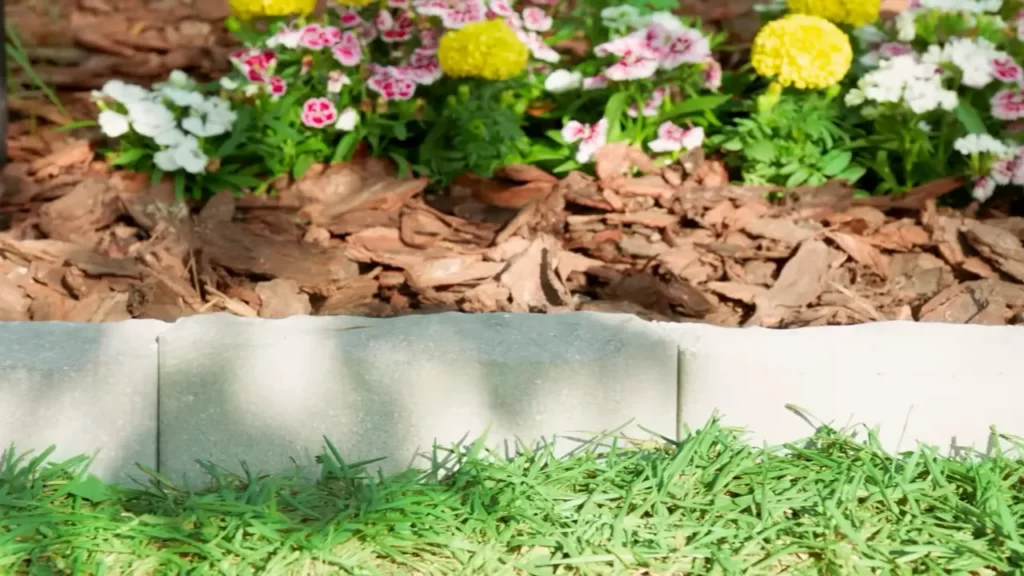o install landscape edging, first, prepare the area by removing any existing vegetation and debris. Then, dig a trench along the desired edge, making sure it’s deep and wide enough to accommodate the edging material.
Place the edging into the trench, ensuring it is level and straight, and backfill the trench with soil, compacting it firmly around the edging. Finally, install any necessary connectors or stakes to secure the edging in place. Creating defined borders and edges in your landscape can enhance its overall appearance and keep your garden features neatly separated.

Landscape edging not only adds a polished and professional look to the design but also helps to prevent the spread of weeds and protect your plants. Whether you’re planning a formal garden, constructing a pathway, or simply organizing various elements, installing landscape edging is an essential step. We will guide you on how to properly install landscape edging to create a clean and attractive delineation between different areas of your outdoor space. Follow these simple steps to achieve a well-defined and visually appealing landscape.
Selecting The Right Landscape Edging Material
Choosing the right landscape edging material is crucial for creating a well-defined and visually appealing outdoor space. There are several factors to consider when selecting the right material for your landscape edging.
1. Durability: The longevity and resistance to wear and tear are essential factors to consider. Metal edging offers excellent durability and can withstand harsh weather conditions. On the other hand, plastic edging is more affordable but may not be as durable as metal.
2. Aesthetics: Consider how the landscape edging will enhance the overall look of your outdoor space. Stone edging adds a natural and rustic charm, while concrete edging provides a clean and modern appearance.
3. Installation: Some materials may require professional installation, while others can be easily installed by homeowners. Plastic edging is typically the easiest to install, whereas metal and stone edging may require more expertise and tools.
| Landscape Edging Material | Pros | Cons |
|---|---|---|
| Metal Edging | Durable, long-lasting | May be more expensive |
| Plastic Edging | Affordable, easy to install | Less durable |
| Stone Edging | Natural appearance, durable | Higher cost, may require professional installation |
| Concrete Edging | Modern look, versatile | Requires professional installation, can be more expensive |

Planning And Preparation
To successfully install landscape edging, proper planning and preparation are essential. The first step is to measure the area where the edging will be installed. This will help determine the amount of landscape edging material that is needed.
Once you have the measurements, you can then mark the desired layout and shape of the edging. This can be done using stakes and string or a garden hose.
Before installing the edging, it’s important to prepare the soil. Remove any existing edging or obstacles that may be in the way. Clear the area of any weeds or debris and ensure that the soil is level and compacted.
By following these steps and properly preparing the area, you can ensure a successful installation of landscape edging that will enhance the beauty of your outdoor space.
Step-by-step Landscape Edging Installation Process
Blog Post Start
Digging the trench for the edging is the first step of the process. Use a garden shovel or edging tool to create a continuous trench around the desired area. Make sure to remove any existing grass or vegetation within the trench.
Once the trench is ready, it’s time to install the edging material securely. Choose a suitable edging material such as plastic, metal, or concrete. Place the edging into the trench, ensuring that it’s sitting flush against the ground.
To connect and join multiple sections of edging, simply overlap the ends of each section. Use connectors or clamps to secure the pieces together tightly. This will create a seamless appearance and enhance the overall stability of the edging.

To secure the edging in place, drive stakes or anchors through the pre-drilled holes located along the edging. This will help prevent shifting or movement, especially in high-traffic areas or during extreme weather conditions.
After securing the edging, backfill the trench with soil and sand mixture. This will provide additional support and stability to the edging. Once the trench is filled, use a rake or tamper to level the edging and ensure an even surface.Blog Post End
Optional Additions For A More Polished Look
Optional Additions for a More Polished Look
In addition to installing landscape edging, there are a few optional additions you can consider to achieve a more polished look for your landscape. These optional additions not only enhance the aesthetics of your outdoor space but also provide additional functionality.
Adding a weed barrier or landscape fabric
One option to consider is adding a weed barrier or landscape fabric underneath the edging. This helps prevent weeds from growing through the edging and invading your landscaped areas. By blocking sunlight and creating a barrier, these materials effectively discourage weed growth, saving you time and effort in maintaining your landscape.
Layering mulch or gravel for added aesthetics and functionality

Another option is to layer mulch or gravel around the edging. This not only adds a neat and finished look to your landscape but also provides additional functionality. Mulch helps retain moisture, regulate soil temperature, and suppress weed growth. On the other hand, gravel provides a low-maintenance option that allows for proper drainage and creates a clean and modern aesthetic.
Maintenance And Care Tips
Regular cleaning and inspection of the edging are important for proper maintenance. Keep the edging free from dirt, debris, and weeds by regularly cleaning it with a broom or a soft brush. Inspect the edging frequently for any damages or loose sections. If you notice any issues, such as cracks or gaps, repair them promptly to prevent further damage. Use a rubber mallet or a hammer to secure any loose sections back into place. Additionally, maintaining the overall appearance of the landscape is crucial. Trim the grass and plants near the edging to prevent them from overgrowing and covering the edging. Use a weed killer to eliminate weeds that might grow near the edging.
Frequently Asked Questions Of How To Install Landscape Edging
How Do You Put Down Landscape Edging?
To put down landscape edging, follow these steps: 1. Prepare the area by removing debris and marking the desired edge line. 2. Dig a shallow trench along the marked line. 3. Install the edging material, such as plastic or metal, into the trench.
4. Secure the edging with stakes or anchors. 5. Backfill the trench and compact the soil around the edging for stability.
How Far Should Landscape Edging Stick Up?
Landscape edging should stick up about 2 to 4 inches above the ground. It provides a clear border between the lawn and flower beds, preventing grass from creeping into the garden and adding an aesthetic touch.
What Is The Easiest Landscape Edging To Install?
The easiest landscape edging to install is flexible plastic edging. It is simple to manipulate and can easily be curved or shaped to fit your desired landscape design. Its lightweight nature makes it easy to handle and install without the need for heavy machinery or tools.
Conclusion
To wrap up, installing landscape edging can transform your outdoor space and bring a sense of organization and definition to your garden beds. By carefully following the steps outlined in this guide, you can achieve a professional-looking result and ensure the longevity of your edging.
Remember to select the right materials, prepare the ground adequately, and secure the edging properly to guarantee a seamless and durable border. Enhance the beauty of your landscape today with stylish and functional edging!
